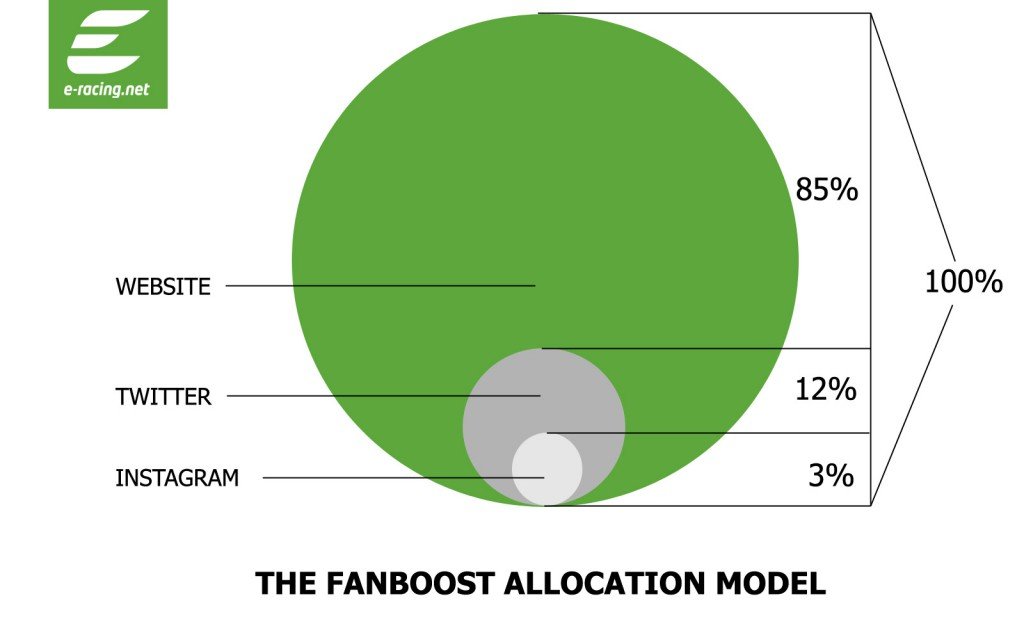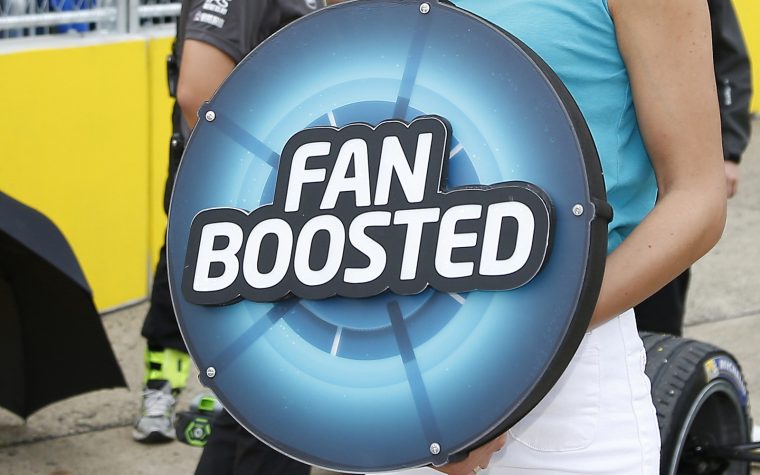#FanBoostWeek: the FanBoost allocation model
[vc_row][vc_column][vc_column_text]
As already established in our #FanBoostWeek coverage, the FanBoost feature of the FIA Formula E championship has been under fire this season. A lot of the criticism arises from the lack in transparency concerning the actual votes but e-racing.net can finally set an end to those discussions.
As fans are now able to vote for their favourite drivers via the social media platforms twitter and instagram as well as the website, they can gain an insight into the votes distributed via social media as these are transparent unlike the votes via the website. Following the Beijing ePrix, both fans and drivers started to speak out against the current voting process for the FanBoost feature and started to question its validity at the same time.
One of the first drivers to publicly voice his distrust in the system was ABT Schaeffler Audi Sport driver Lucas di Grassi. The leading man in the championship said via twitter: “I’ve been seeing the #fanboost on twitter and I’ve realised there is NO CORRELATION between the hashtags and position on the leaderboard.”
As the series did not agree to share any official numbers to protect the privacy of the voters, gaining a detailed insight into the FanBoost allocation proved itself to be complicated. Thanks to the twitter analytics tool Topsy, e-racing.net was able to uncover the numbers behind the voting nevertheless. While this tool allows users to do a detailed twitter analysis, numbers for Instagram remain unclear to this day. As it is a social media platform like twitter – even though the posting concepts differ – it can be assumed that the voting distribution is similar to the one seen on twitter.
Distributing the same percentage for each driver regardless of the social media platform also ensures that misconceptions of the instagram votes don’t adulterate the overall allocation model. A basic search for the FanBoost hashtag on instagram already showed that voting via the photo and video based platform is significantly less popular than voting via twitter. Therefore it can be deduced that only a small overall percentage of the votes arises from instagram.
Topsy was the basis for postulating the votes via twitter. For both the voting periods for the Beijing and the Putrajaya ePrix, e-racing.net used the tool to identify how many votes each driver got from his fans every day. Due to the Trulli Formula E team not being able to take part in the first two ePrix of the season, the series did not count the votes for Salvador Duran, Vitantonio Liuzzi and Jarno Trulli respectively and have not been taking into account for the creation of this model for the same reason. Therefore the actual FanBoost allocation model is marginally contorted. The follow-up articles on the exact numbers for Beijing and Putrajaya will offer both the actual and the reassessed numbers.
The foundation for the FanBoost allocation model is the average of the results so far. Therefore the model does not enable one to make the correct FanBoost predictions for every single ePrix. Yet it builds the basis for the actual vote distribution and is only affected by external factors which will be mentioned in the follow-up article on Saturday. The graphic below shows the impact each platform has on the FanBoost allocation.

The FanBoost allocation model illustrating the impact each voting platform has on the vote distribution – © e-racing.net
Not taking into account the votes for the Trulli Team, an average of 5648 votes has been cast via social media with significantly more voters for the Beijing ePrix. It can be assumed that there have also been percental less voters on the website thus not changing the overall impact each platform has on the FanBoost allocation. The drivers with most votes via social media are Bruno Senna and Nelson Piquet Jr in both cases. They are followed by Nick Heidfeld, Simona de Silvestro and DS Virgin Racing duo Jean-Eric Vergne and Sam Bird. Ranking at the bottom of the social media votes are Stephane Sarrazin, Loic Duval, Jerome d’Ambrosio and Lucas di Grassi.
A similar vote distribution can be seen on the website. The drivers with many votes on twitter and instagram also receive most votes via the website. Significantly different voting patterns can be seen with Bruno Senna, Simona de Silvestro and Oliver Turvey. While Senna and de Silvestro barely get any votes on the website, Turvey makes up for his lack of social media votes with a huge voting base on the official website. There is a correlation between website and social media votes, and the twitter and instagram votes can also be predicted to some extend due to a handful of context factors. Some of these factors are the amount of followers, the result in the last race and the amount of tweets about FanBoost. Further data on the context factors will follow in our Saturday coverage.
[/vc_column_text][/vc_column][/vc_row][vc_row][vc_column][vc_column_text]
Image courtesy of FIA Formula E Media
[/vc_column_text][/vc_column][/vc_row]





 No part of this website or any of its contents may be reproduced, copied, modified, adapted, used or distributed without the prior written consent of the author. e-racing.net is not responsible for the content of external sites or links.
No part of this website or any of its contents may be reproduced, copied, modified, adapted, used or distributed without the prior written consent of the author. e-racing.net is not responsible for the content of external sites or links.